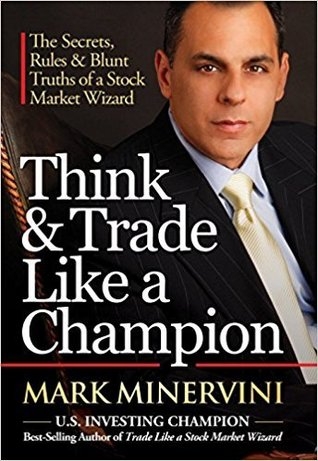Think and Trade Like a Champion by Mark Minervini

SECTION 1
Always Go in with a Plan
Virtually every endeavor—playing a sport, building a house, jackhammering
a street, running for political office, or performing a surgical operation—
requires a plan before you get started. A contractor wouldn’t even start to dig
the foundation for a building without having blueprints. Before every game,
the coach of your favorite sports team drafts a game plan and presents it to
the players. A surgeon has test results, MRI imaging, and a surgical plan
before making the first incision.
If you want success in the stock market, before you do anything, you should
develop a plan. The how of your plan resides in a series of concrete guides
for action. Most investors, though, have no real plan. Or, worse yet, they
have a poor plan based on faulty notions and unrealistic ideas about
investing. They get a tip from a broker or they hear something on TV, or
maybe someone who supposedly knows somebody tells them that a stock is
going to take off. And just like that, thousands of dollars are on the line,
without a tangible plan.
How smart is that?
Trading is serious business with real money on the line. Why would you
go into it without a well-thought-out plan of action? Yet, most people do.
The ease of entry into the stock market—no license or training required; just
open a brokerage account and go—may give people the false impression that
trading is easy. Or, perhaps they think their odds of succeeding without
much thought are far better than they really are. Whatever the reason, I’ve
seen people invest $100,000 in a stock with less research than when they buy
an $800 flat screen TV. They’ll commit thousands of dollars to a stock
because of a tip from a friend of a friend, without spending much time if any
on research and planning. Greed takes over, and all they can see is the
upside, without much thought about the downside or if the unthinkable
happens!
HAVE A PROCESS
When I first started trading, I had no real plan at all. My only “strategy,” if I
can call it that, was to follow that old axiom: “Buy low and sell high.” I
thought that meant to buy stocks that were down, figuring that what goes
down must go back up. I’d buy big-name companies when they were
depressed, because I’d been told, “You can’t go wrong with AT&T or
General Electric.” Buying these stocks when they dropped seemed like a
great idea to me back then, because I believed they were less risky and
eventually had to go up. Wrong!




